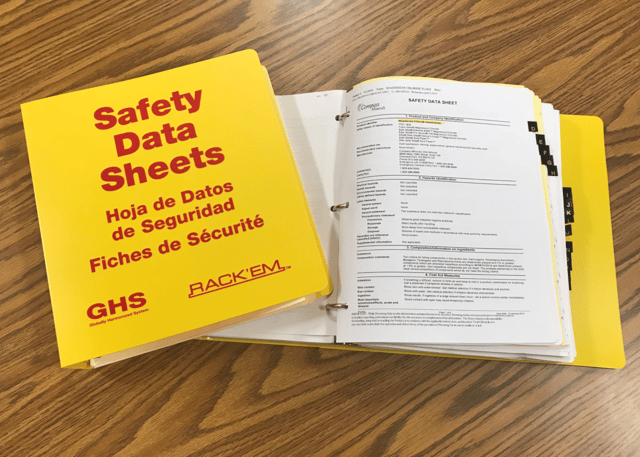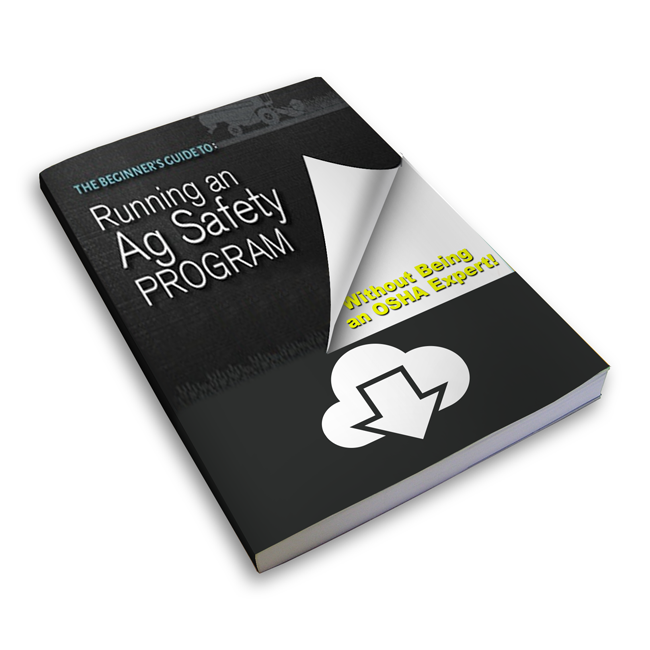There’s something intimidating to the average person viewing Safety Data Sheets (SDS) with all the scientific words and a mountain of detail. It no doubt looks like “work” to try to decipher a typical sheet and a bit overwhelming.
Would employees feel the same way if they became more familiar with SDS and knew how to break it down to where it wasn’t information overload? Let’s be honest, to most employees, that SDS binder or that computer for SDS information lookup is someone else’s job not theirs. All workers need to know how to access hazardous chemical information. Here are three steps to simplifying SDS sheets so employees can refer to them as a resource of information.

Step 1. Get employees familiar with information SDS provides:
First, let’s be clear what safety data sheets are. SDS sheets provide comprehensive information about:
- the properties of a hazardous substance
- how it affects health and safety in the workplace
- how to manage these risks
Second, SDS explains how the substance:
- should be safely used
- stored
- transported
- disposed of
Third, SDS provide:
- first aid information
- personal protective equipment
- what to do in the case of and emergency such as a spill or fire
Ag operations deal with a wide variety of chemical applications, such as fertilizers, herbicides, insecticides and fungicides. Livestock operations work with antibiotics, vaccines and hormones to name a few. All can pose a health risks if not understood, handled and applied safely. The SDS is the resource (one stop shop for information) employees need to turn to for a better understanding hazardous substance(s) they encounter.
Step 2. Get employees familiar with looking for information they need:
What’s nice about a SDS sheet is that all the information you’ll need is in one document. The form has been standardized world-wide so that all SDS sheets have information in the same order. There are 16 different sections designed to answer a specific question. Here’s a look at each of the sections:
Section 1. Chemical Product and Company Identification Section 9. Physical Chemical Properties
Section 2. Harzard Identification Section 10. Stability and Reactivity
Section 3. Composition, Information of Ingredients Section 11. Toxicological Information
Section 4. First Aid Measures Section 12. Ecological Information
Section 5. Fire Fiighting Measures Section 13. Disposal Considerations
Section 6. Accidnetal Release Section 14. Transportation Information
Section 7. Handling and Storage Section 15. Regulatory Information
Section 8. Exposure Controls, Persoanl Protection Section 16. Other Information
OSHA provides this resource Hazard Communication Standard: Safety Data Sheets (29 CFR 1910.1200(g) to help explain each of the 16 sections in more depth. Our Good Day's Work class on Hazard Communication covers SDS as well.
Chances are an employee only needs a portion of the information provided in an SDS under normal circumstances. When employees know what their looking for and what section to find it, the overall SDS becomes less overwhelming. They filter out what they don't need and zero in on what they do. Here's where the magic sets in....because of familiarity with the sheets, employees start to see the SDS as a resource of information!
Safety directors want employees comfortable looking things up they don't know....to do their jobs safely and more effectively. You also want them to access critical information quickly in the case of an emergency. It all starts with getting employees familiar with the SDS and how to find information they need.
Step 3. Actively engage employees in looking information up:
Many training programs on SDS may stop at steps 1 and 2, providing information. Step 3 suggests safety directors help employees retain more information by engaging them in using real applicable exercises to make it experiential….so how to source SDS information sticks in their memory.
Create look-up exercises for employees that are directly related to their duties. Once workers have an opportunity to navigate the SDS to locate the information needed, they’ll find what they need quickly and tune out what’s not needed. The end result is being familiar with what the SDS sheet offers, where to find what they need and not be intimidated or overwhelmed with information.
When employees have questions in the future, rather than avoid the SDS or say it’s not my issue, you’ve created an environment for them to look up what they have questions about. A question on storage and personal protection, for example, becomes a quick look-up procedure. Once workers are comfortable looking up information on SDS, they start to retain a broader knowledge of the chemicals they interact with and how to work with them safely. Step 3 moves what employees learn in steps 1 and 2 into practice.
In closing:
As a safety director or HR director, you can’t train every employee on every hazardous chemical they might encounter in your operation. However, you can teach them how to use the SDS as a resource for information on the hazardous chemicals they encounter.
This reminds me of the Chinese Proverb; Give a Man a Fish, and You Feed Him For a Day. Teach a Man To Fish, and You Feed Him for a Lifetime. Engagement or hands on experience in step 3 is as vital as steps 1 & 2. The SDS enables the employee to access information needed, broaden their knowledge base and make looking up information part of your company’s safety culture.
Are your employees vaguely familiar with SDS or are they fully capable of finding specific information on a SDS to keep themselves and others safe when working with hazardous substances? Let me know in the comments below.



